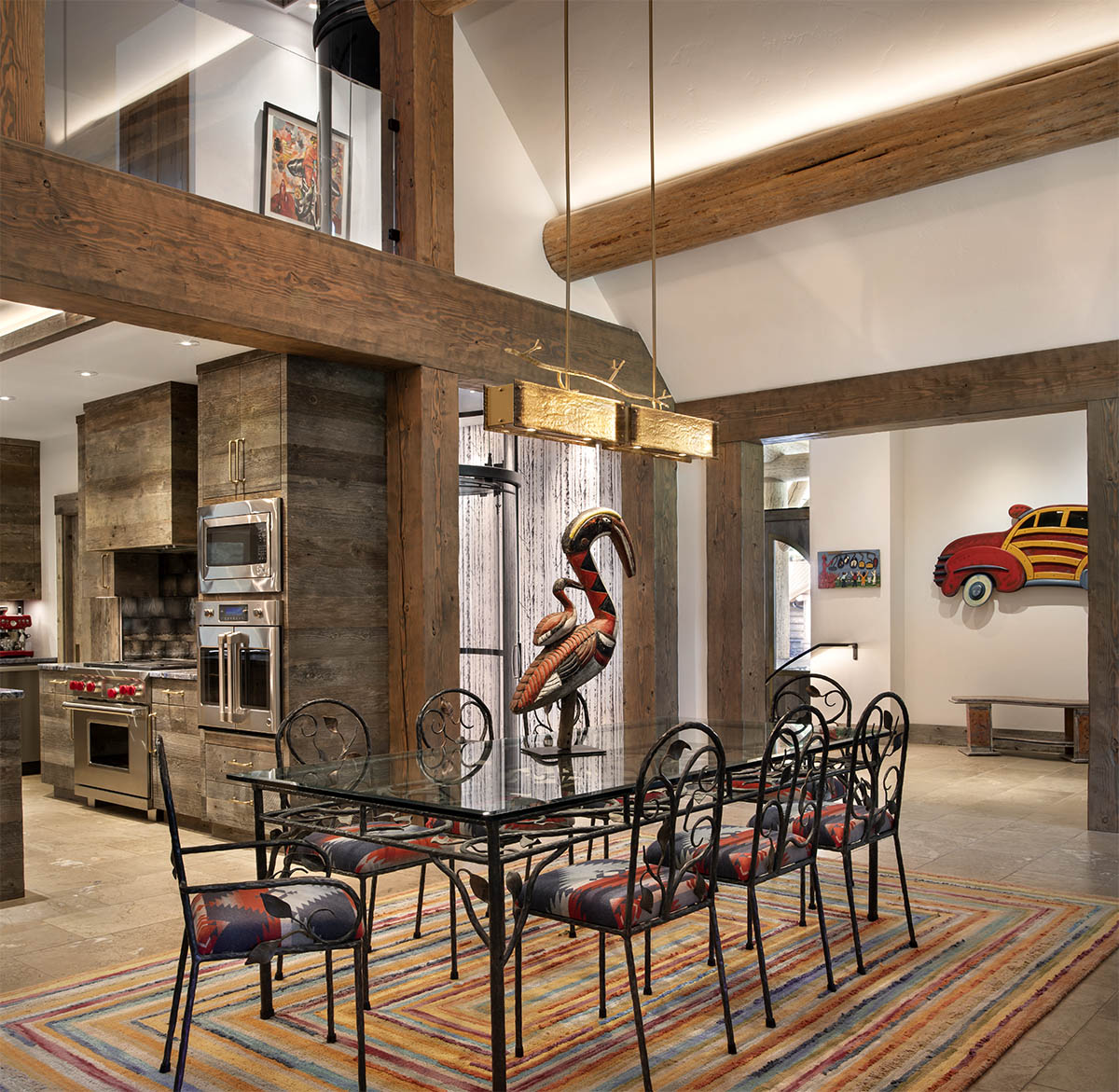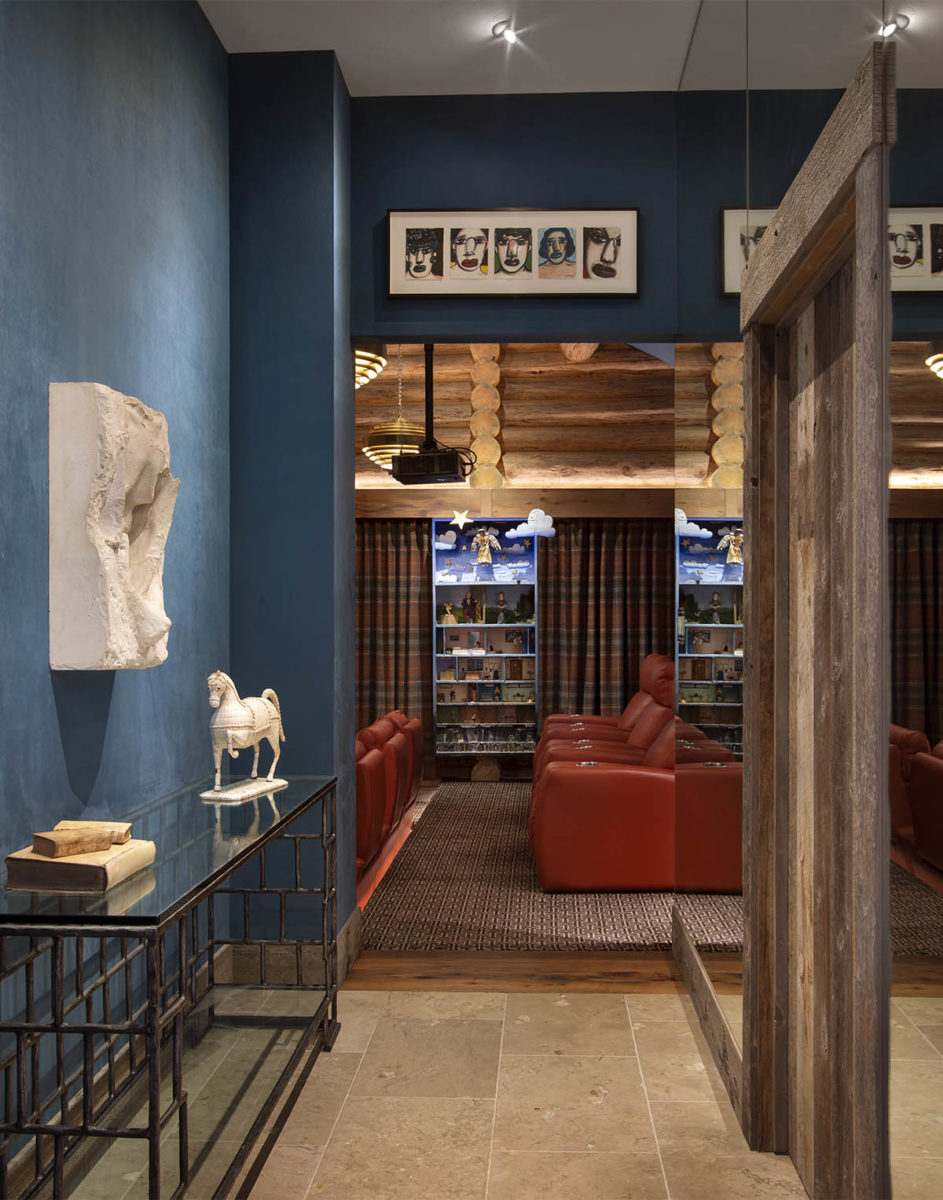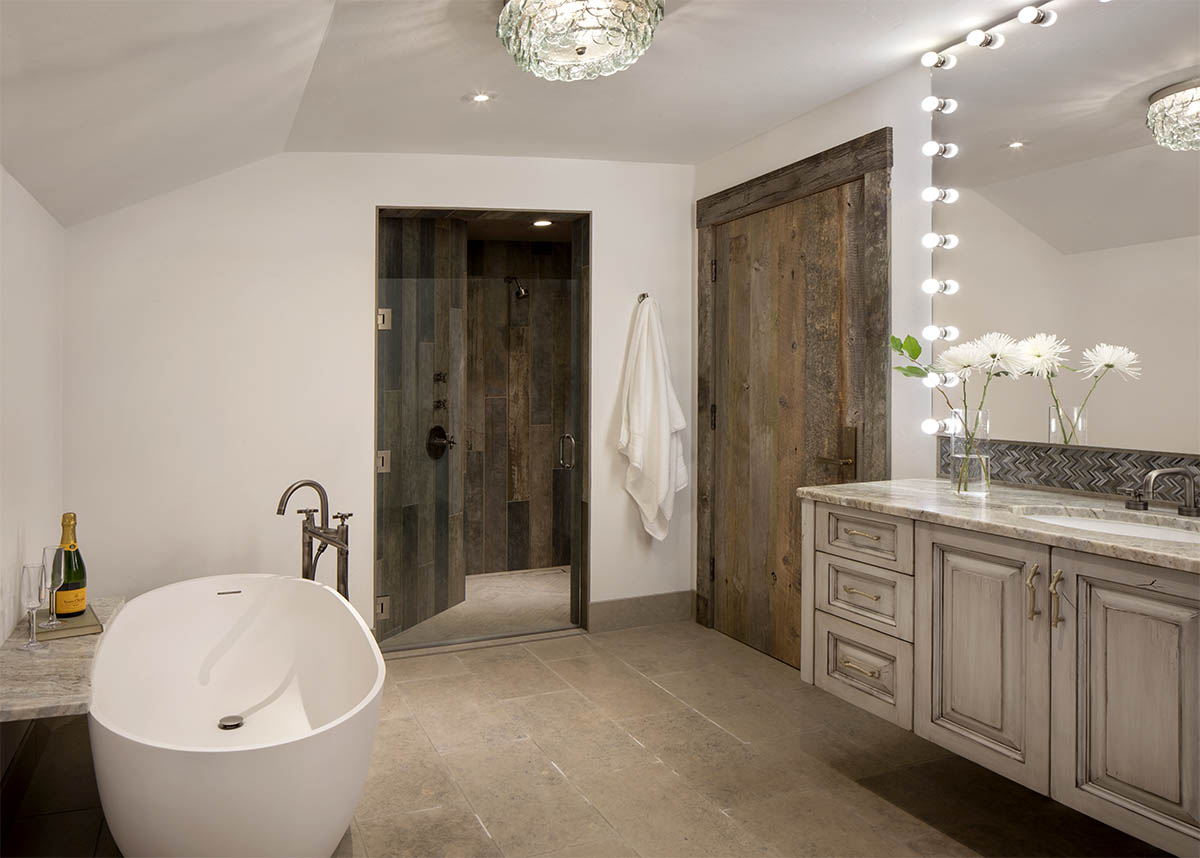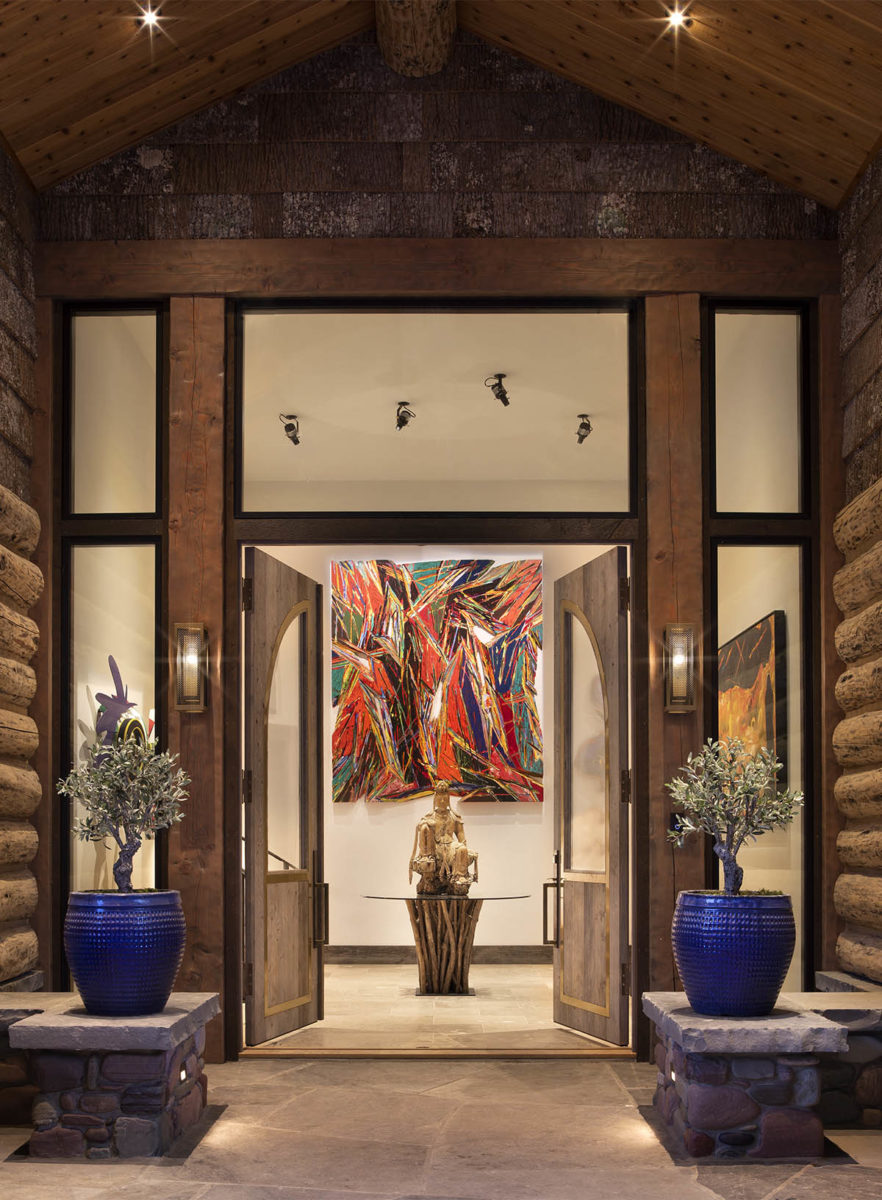Art affects the way we see the world and interact in it, so much so that that we have the adage, “life imitates art.” As much can be said for the design of this chic modern cabin remodel and addition.
When the owners of this idyllic Swan River cabin began the process of remodeling their log home, they were inspired by an eclectic, and large, art collection acquired over decades. One purpose of art is to encourage thinking, and infinite thought and care were taken to catalog and locate a proper home for every piece of this collection.


Enhancing the art through lighting factored heavily into its placement. Light values and locations, heat and scene selection were just a few of the biggest considerations. Most realize that pointing a spotlight on art will make it stand out. In this home, especially, lighting actually impacts the art through the casting of light and shadows.
Using multiple works by the same artist or pieces with similar styles also plays a role. In the master bedroom, works by Frank Stella and Jean Dubuffet complement the serene color palette. Simple coordinating colors were chosen for the bedframe and chairs to enhance, not diminish, the art’s impact.
The master bathroom has an austere spa-like quality with intrigue derived from the textures and materials. A Roy Lichtenstein hangs above the tub and reflects subtly in the mirrors custom made to fit within the natural limestone tile behind the vanity.
The fireplace in the great room was retained from the original home’s design. River rock adds playful hues to the space and inspired the overall art placement. A contemporary bust by Niki de Saint Phalle adorns the hearth, while an ethereal piece by local artist Jennifer Li hangs above the mantel. The Li painting and bust on the hearth work nicely together along with the leather furniture and Pendleton rug.


The grand foyer and porte-cochère were major additions to the existing home. The entry and double doors were custom designed to house the massive Charles Arnoldi mixed-media piece, the crown jewel of the homeowner’s impeccable collection. As demonstrated here, the placement of art is as important as the placement of the other furnishings surrounding the art. This Arnoldi work would have looked great on the wall alone, but the entry table weights and emphasizes the painting.
The theater is characterized by the repetition of color and line. Interesting folk art found during the homeowners’ travels delineate the overall playful uses of color, like orange theater seating and blue suede upholstered ceilings, paired alongside patterns like the Ralph Lauren plaid curtains. These pieces somehow come together harmoniously.
A George Segal bust splashes a feeling of whimsy in the hallway. Move across the hall to the powder room, where another folk piece makes a bold statement as you enter without overshadowing the patterned walls and custom live edge slab vanity.
Sometimes you can support art simply by exercising some restraint and letting it be the star of the room. For instance, in a monochromatic scheme, the designer gives your eye someplace to rest. Because of the level of detail in the art, colors and shapes in accessories would actually distract.


While muted in tone, the kitchen features lapis blue granite, chosen by the homeowners before any other selection was made. The custom barnwood cabinets have gray tones that reflect the blue in the stone counters and limestone floors found throughout the house. Again, all of this makes for a stunning backdrop to highlight the star of the home: the art collection.
Art and design can be broken down into seven principles: balance, rhythm, emphasis, pattern, contrast, unity, and movement. Using the concepts we’ve discussed creates unity and a bold design, combining repetition of color, shape and furniture placement to enhance impact.
Colton Martini studied architecture at Montana State University. He is a practicing interior designer in Whitefish and Missoula and can be reached at (406) 480-2375, [email protected] and www.ColtonMartini.com
